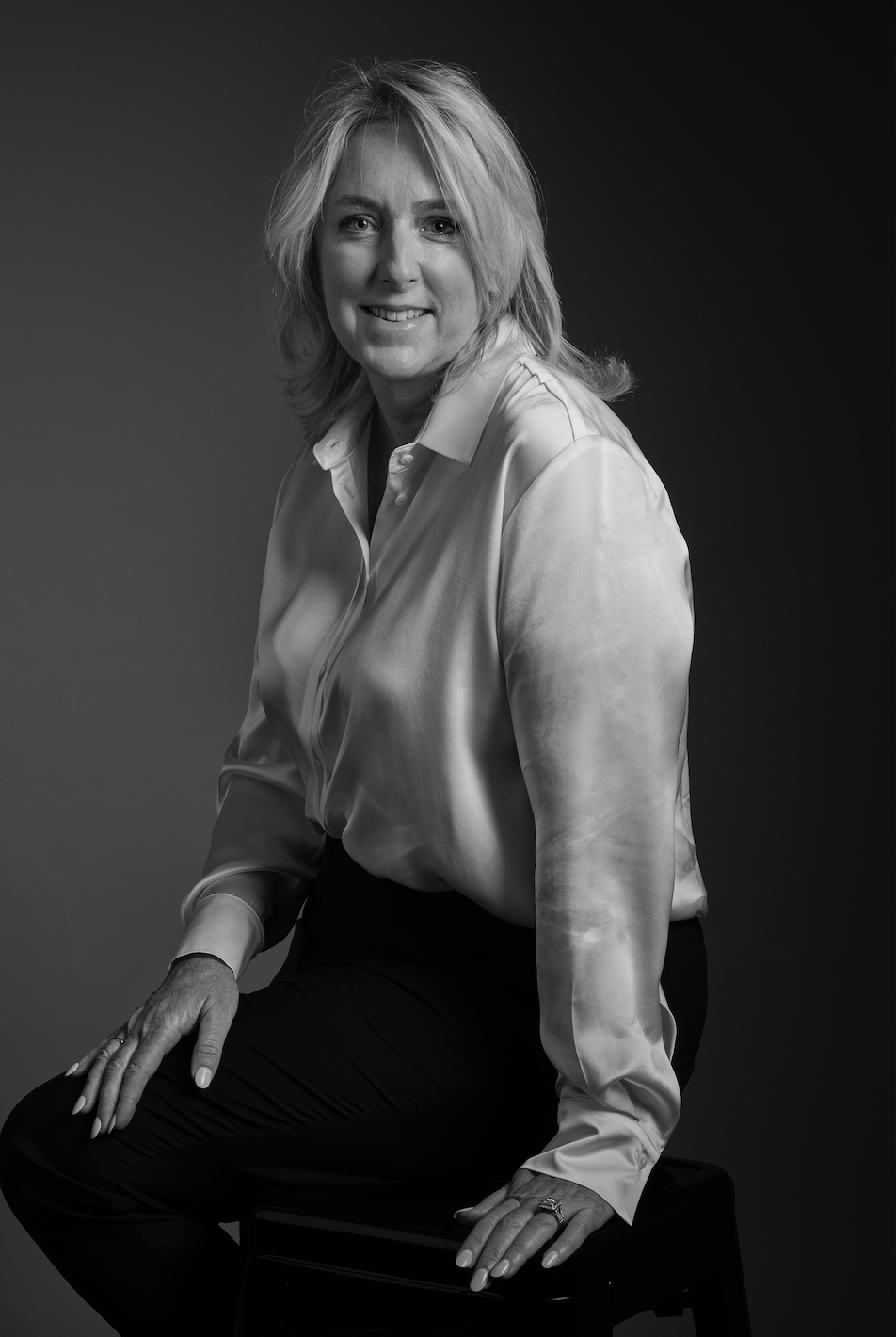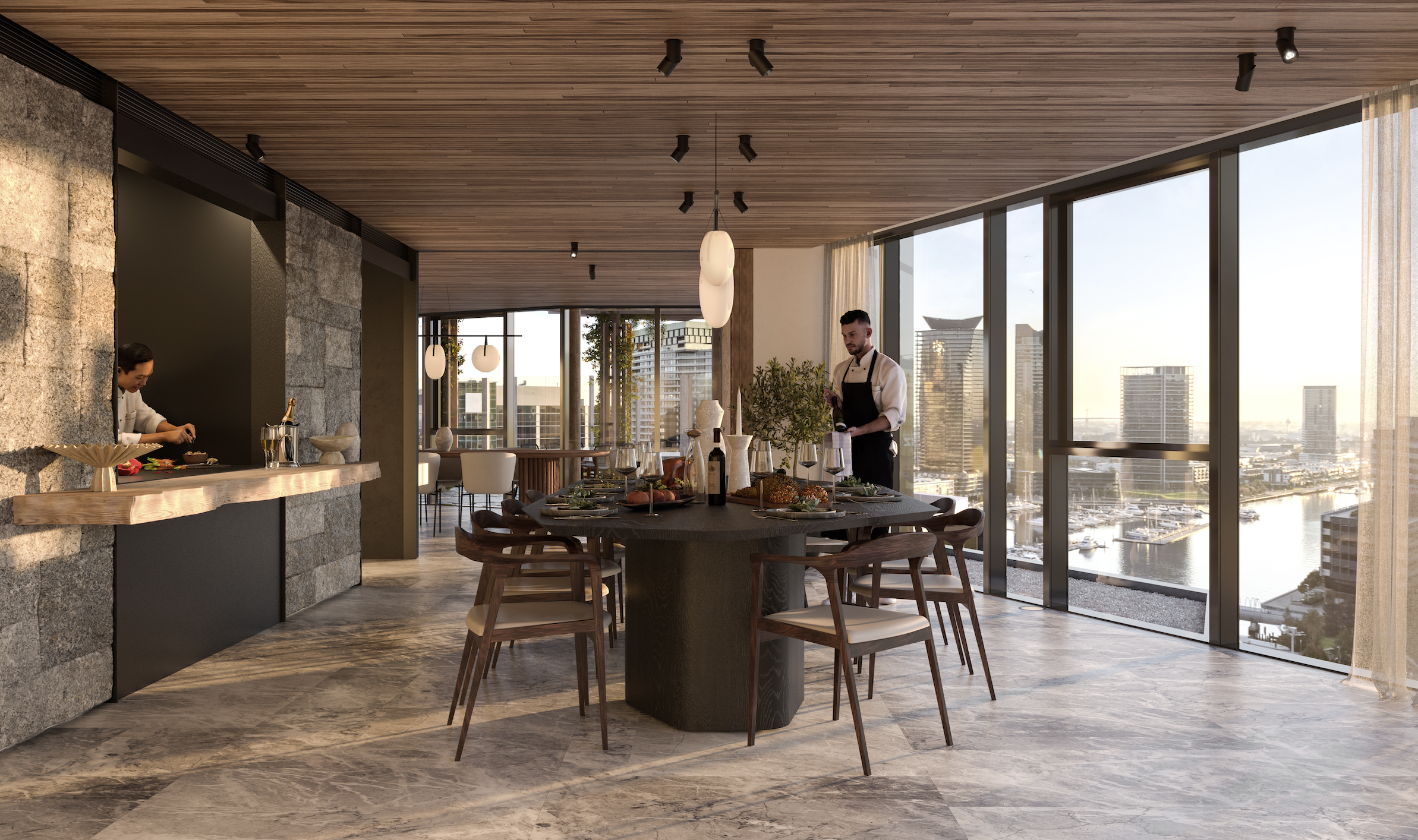The hotel-style services you can enjoy — without leaving home
The apartment concierge goes mainstream as luxury developments take service to a new level
As downsizing has given way to rightsizing, a new breed of homeowner is exercising their right to outsource. From dog walking to gift buying, personal drivers to private chefs, today’s concierge services have become so much more than the glorified parcel-minding amenities of yore. Time poor homeowners are increasingly seeing the value of bringing the hotel lifestyle home by happily handing over daily tasks — and the real estate industry is taking note.
The global concierge services market was valued at US$647.30 million in 2022, and is predicted to hit $1.1 billion by 2032 according to Allied Market Research data. While there are no comparable Australian-only statistics, anecdotal evidence suggests our local market is set to explode as stretched-thin professionals seek out additional at-home help.
Interested in more stories like this? Order your copy of Autumn 2024 Kanebridge Quarterly magazine here.
Concierge on call
Comprehensive concierge services are now a hot commodity in lavish new residential developments, especially those targeting “rightsizers” relocating from big family homes to lock-up-and-leave apartments. Once just a smiling face in the lobby of upmarket inner-city unit blocks, the role of a concierge in 2024 goes beyond simply signing for packages and surveilling security cameras.
The Landmark in Sydney’s Lower North Shore is a $1.4 billion development offering residents access to its Club 500. The exclusive club includes traditional aides such as house keeping, restaurant bookings and car washing, with additional high end helpers like chauffeurs, event managers, interior decorators and personal shoppers.

On the riverfront in Melbourne’s Docklands precinct, Seafarers (a joint venture between Riverlee and 1 Hotels) is part five-star hotel, part residential development giving permanent residents the opportunity to cash in on the hospitality. Homeowners at the $550 million project set to open in late 2024 can tap into all the guest services of the luxury accommodation.
“Residents will benefit from a blend of the best hotel amenities with curated residential offerings, including organic pantry stocking, botanical and pet care, eco-conscious housekeeping, private chefs, in-room massages and access to the hotel’s event programming,” says Riverlee’s development director, David Lee. “The breadth of services on offer combines convenience, luxury, and responsibility into an unparalleled residential experience.”
Lee says Australian’s desire for concierge services is increasing as the needs of local luxury property buyers continue to evolve.
“As a developer, we saw a need to cater to this demand and provide residents with access to the services that allow them more time to enjoy life and experience luxury within the comfort of their homes,” he adds. “As we navigate the new norm post-pandemic, integrated services have become an enabler of a more balanced lifestyle, and we recognise that people are looking for a complete lifestyle upgrade, which begins in the home.”
A life of service
Evan Cannan, operations manager with building management company Lefand, has been a professional concierge for more than two decades, first in five star hotels and now in a residential setting. Lefand will provide building services at new residential development Akoya, a 55s project in Greenwich, Sydney.
“The types of services and facilities are becoming more high end, especially over the past five to 10 years, compared with the concierges we remember from the 1980s and 1990s,” Cannan says. “These additional services mean apartments are achieving a higher price point, but with that comes higher strata fees.
“However, most buyers are happy to pay for it because they’ve reached that stage of their lives when they appreciate it.
“These people have seen the benefits of having a concierge within their office space, or they’ve travelled the world and experienced luxury concierges in places like Dubai and Singapore.”

Although there was once a great divide between a hotel concierge and an apartment concierge, Cannan says the lines have now blurred.
“A great concierge needs to have a wealth of information at their fingertips. Without even looking having to look it up they should be able to know the best restaurants in the area, what events are on and where, and just be able to advise residents with personal requests.”
He says the job calls for plenty of patience and discretion.
“I’ve had no limit of extraordinary requests over the years including one lady who used to send me off with her ATM card to get large sums of money out for her, but sometimes it’s as ordinary as looking something up on Google Maps when you know they could have found the information themselves,” he says.
Moving forward, Cannan predicts concierge services will likely be shaped by client demand as apartment buildings become vertical villages.
“Just looking at what’s available within services around the world, I think there’s still a lot more to come to Australia,” he says. “A good concierge service is regularly having those discussions with residents about what they want and don’t want.”
Helping hand at home
Brand new apartment developments aren’t the only bricks and mortar getting the concierge treatment. Melbourne-based real estate agency Kay & Burton launched its in-house concierge service two years ago with a handful of offerings. What started as a service organising removalists and connecting homeowners with tradespeople has morphed into more than 100 preferred partners and associates.
Cath Stubbings, director of Kay & Burton’s concierge team, says due to overwhelming demand for a suite of lifestyle requirements, the team has grown exponentially.
“It started with us wanting to service our clients with their property-related needs. As a result of finding trades for them we naturally started getting asked for more lifestyle-related things,” she says, adding that the evolution has stemmed from a desire for a better work/life balance.

“Many of our clients have fairly senior roles, or run their own businesses, and they’re reevaluating what’s the best use of their time. Those working quite long hours see the value of outsourcing tasks they may have normally done themselves.”
Since COVID lockdowns, Stubbings says her clients are spending more time travelling so are seeking a professional shoulder to lean on.
“We look after their home while they’re away, which involves anything from visiting the property regularly to checking mail, watering gardens, turning lights on and off, putting blinds up and down, meeting trades, arranging cleaners or even putting food in the fridge.
“The idea is when they return they’ve got a welcoming house to come back to and it gives them peace of mind.”
As the sector grows, Stubbings says the requests are also becoming more bespoke.
“Now we even have people asking us to stock their cellars,” she says. “There’s a trade on our platform specialising in building cellars so they liaise with the client to get an idea of what types of wine they like, what balance they want, and then go about sourcing those wines and building the cellar up from scratch.”
Stubbings says with the work from home phenomenon, the need for help at home will likely continue to grow.
“Over the next three to five years we’re going to see more people calling on a wide range of concierge services as individuals travel more or spend time building businesses,” she says.
“It’ll become more common to seek out people like us who can support you getting things done around the home.”
This stylish family home combines a classic palette and finishes with a flexible floorplan
Just 55 minutes from Sydney, make this your creative getaway located in the majestic Hawkesbury region.
As Paris makes its final preparations for the Olympic games, its residents are busy with their own—packing their suitcases, confirming their reservations, and getting out of town.
Worried about the hordes of crowds and overall chaos the Olympics could bring, Parisians are fleeing the city in droves and inundating resort cities around the country. Hotels and holiday rentals in some of France’s most popular vacation destinations—from the French Riviera in the south to the beaches of Normandy in the north—say they are expecting massive crowds this year in advance of the Olympics. The games will run from July 26-Aug. 1.
“It’s already a major holiday season for us, and beyond that, we have the Olympics,” says Stéphane Personeni, general manager of the Lily of the Valley hotel in Saint Tropez. “People began booking early this year.”
Personeni’s hotel typically has no issues filling its rooms each summer—by May of each year, the luxury hotel typically finds itself completely booked out for the months of July and August. But this year, the 53-room hotel began filling up for summer reservations in February.
“We told our regular guests that everything—hotels, apartments, villas—are going to be hard to find this summer,” Personeni says. His neighbours around Saint Tropez say they’re similarly booked up.
As of March, the online marketplace Gens de Confiance (“Trusted People”), saw a 50% increase in reservations from Parisians seeking vacation rentals outside the capital during the Olympics.
Already, August is a popular vacation time for the French. With a minimum of five weeks of vacation mandated by law, many decide to take the entire month off, renting out villas in beachside destinations for longer periods.
But beyond the typical August travel, the Olympics are having a real impact, says Bertille Marchal, a spokesperson for Gens de Confiance.
“We’ve seen nearly three times more reservations for the dates of the Olympics than the following two weeks,” Marchal says. “The increase is definitely linked to the Olympic Games.”

Getty Images
According to the site, the most sought-out vacation destinations are Morbihan and Loire-Atlantique, a seaside region in the northwest; le Var, a coastal area within the southeast of France along the Côte d’Azur; and the island of Corsica in the Mediterranean.
Meanwhile, the Olympics haven’t necessarily been a boon to foreign tourism in the country. Many tourists who might have otherwise come to France are avoiding it this year in favour of other European capitals. In Paris, demand for stays at high-end hotels has collapsed, with bookings down 50% in July compared to last year, according to UMIH Prestige, which represents hotels charging at least €800 ($865) a night for rooms.
Earlier this year, high-end restaurants and concierges said the Olympics might even be an opportunity to score a hard-get-seat at the city’s fine dining.
In the Occitanie region in southwest France, the overall number of reservations this summer hasn’t changed much from last year, says Vincent Gare, president of the regional tourism committee there.
“But looking further at the numbers, we do see an increase in the clientele coming from the Paris region,” Gare told Le Figaro, noting that the increase in reservations has fallen directly on the dates of the Olympic games.
Michel Barré, a retiree living in Paris’s Le Marais neighbourhood, is one of those opting for the beach rather than the opening ceremony. In January, he booked a stay in Normandy for two weeks.
“Even though it’s a major European capital, Paris is still a small city—it’s a massive effort to host all of these events,” Barré says. “The Olympics are going to be a mess.”
More than anything, he just wants some calm after an event-filled summer in Paris, which just before the Olympics experienced the drama of a snap election called by Macron.
“It’s been a hectic summer here,” he says.

AFP via Getty Images
Parisians—Barré included—feel that the city, by over-catering to its tourists, is driving out many residents.
Parts of the Seine—usually one of the most popular summertime hangout spots —have been closed off for weeks as the city installs bleachers and Olympics signage. In certain neighbourhoods, residents will need to scan a QR code with police to access their own apartments. And from the Olympics to Sept. 8, Paris is nearly doubling the price of transit tickets from €2.15 to €4 per ride.
The city’s clear willingness to capitalise on its tourists has motivated some residents to do the same. In March, the number of active Airbnb listings in Paris reached an all-time high as hosts rushed to list their apartments. Listings grew 40% from the same time last year, according to the company.
With their regular clients taking off, Parisian restaurants and merchants are complaining that business is down.
“Are there any Parisians left in Paris?” Alaine Fontaine, president of the restaurant industry association, told the radio station Franceinfo on Sunday. “For the last three weeks, there haven’t been any here.”
Still, for all the talk of those leaving, there are plenty who have decided to stick around.
Jay Swanson, an American expat and YouTuber, can’t imagine leaving during the Olympics—he secured his tickets to see ping pong and volleyball last year. He’s also less concerned about the crowds and road closures than others, having just put together a series of videos explaining how to navigate Paris during the games.
“It’s been 100 years since the Games came to Paris; when else will we get a chance to host the world like this?” Swanson says. “So many Parisians are leaving and tourism is down, so not only will it be quiet but the only people left will be here for a party.”
This stylish family home combines a classic palette and finishes with a flexible floorplan
Just 55 minutes from Sydney, make this your creative getaway located in the majestic Hawkesbury region.


















